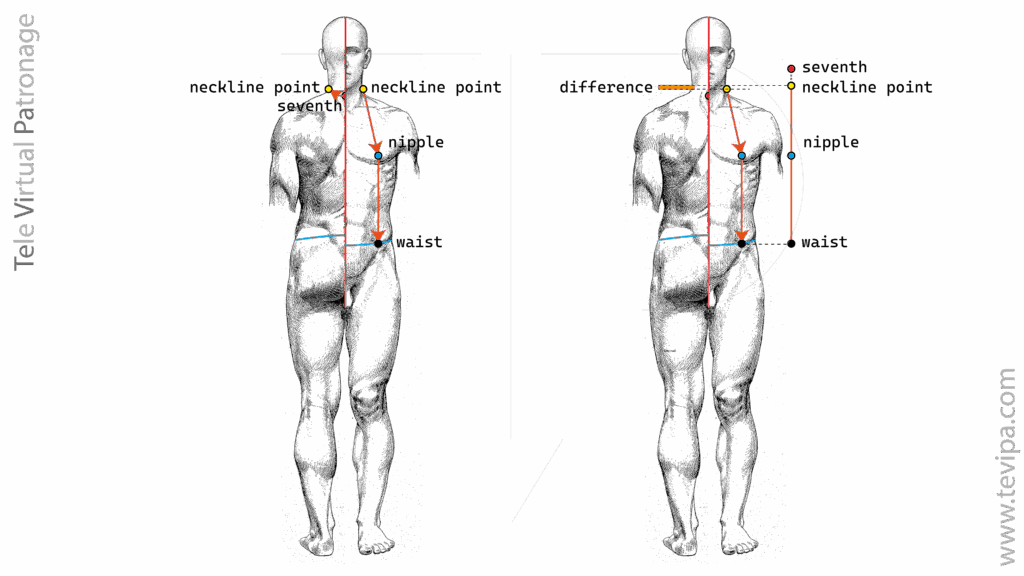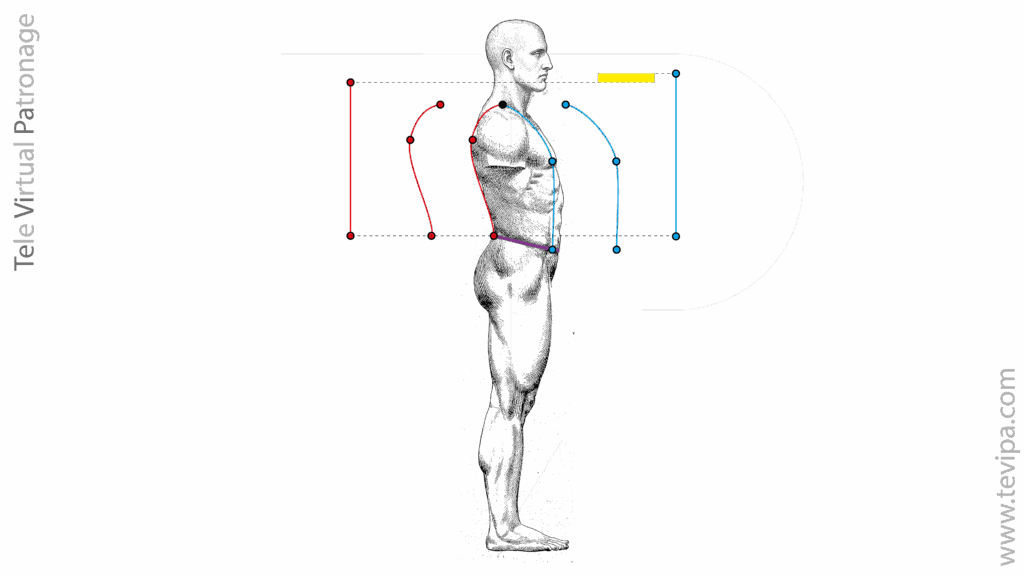Originally published on March 12, 2013

Measurements 2
Front bust
The front bust is one of the key vertical measurements in patternmaking. That’s why it deserves its own dedicated post.
What is the front bust and why does it matter?
First, we must distinguish according to biological sex:
- In male morphology, the front bust serves as a control measurement to identify specific back conformations.
- In female morphology, this measurement also reflects breast shape and development, making it structurally essential.
How to measure the front bust?
The measurement is taken from the front neckline point (where the neckline meets the shoulder seam), passes over the nipple, and then goes straight down to the waistline.
However, there’s a challenge: we don’t have a fixed anatomical point to place the tape at the neckline point — unlike the back bust, which starts from the seventh cervical vertebra.
A common practice is measuring over the client’s clothing, but that’s inaccurate, as the shoulder seam may not be in the correct position.
Accurate method to measure the front bust
To take an exact measurement, follow these steps:
- Place the tape on the seventh cervical vertebra, as you would for the back bust.
- Wrap it around the base of the neck.
- Pass over the shoulder.
- Drop down to the nipple.
- From there, drop vertically to the waist.

This path includes the distance from the seventh vertebra to the base of the neck, so you must subtract the actual neckline depth.
How much to subtract?
- Subtract one-sixth of the half bust circumference, which equals the back neckline width. Or use a corrective value: one-eighth of the half bust + 2 cm.
- This gives you the true shoulder seam position.
What do we get from this triple measurement?
- Bust drop (shoulder seam to nipple)
- Front bust length (shoulder seam to waist)
- Nipple height from waist (waist to nipple)
Difference between front and back bust
In a man without special conformations, the front bust is usually 1–2 cm longer than the back bust.
However, in most men’s patterns, this difference is not considered, as it’s compensated by leg length difference front and back.

On the left: front and back bust lines drawn on a mannequin.
On the right: the straightened lines show that the difference is usually minimal (about 1 cm).
The front bust in women

In women, the front bust is significantly longer because it includes the Vertical Breast Development (VBD).
We explore this in detail in the post:
👉 The female breast: adapting the male pattern
For men with particular conformations (curved back, hyper muscular chest), this measurement is crucial for proper fit.
What’s next?
In the next post, we’ll look at how to draw the front bust lines in female patterns. Later, when we explore body conformations, we’ll revisit male front and back busts, especially for curved backs or hyper developed chests.
